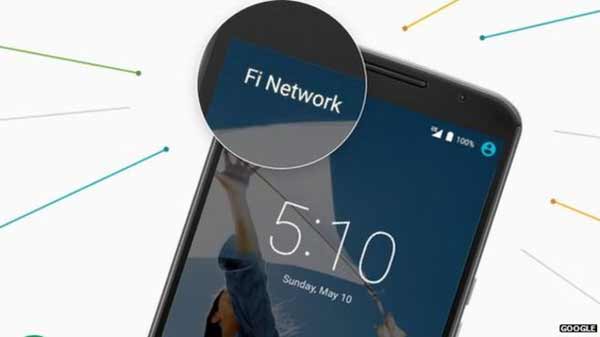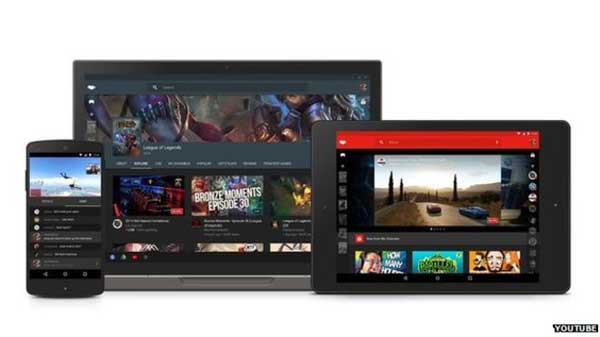New York (BBN)-Google has detailed its plan to run a mobile phone network in the US.
The firm will rent voice and data capacity from two existing operators – Sprint and T-Mobile – and use existing wi-fi hotspots, rather than build new infrastructure from scratch, reports BBC.
Initially, Project Fi will only be offered to Nexus 6 handset owners.
Google Fiber, the firm’s “ultra-fast” broadband service, is already seen as a disruptive force in the US telecoms market.
It has been credited with encouraging Comcast and Time Warner Cable to offer their own customers speed boosts without higher prices.
However, Fiber’s roll-out involved Google buying infrastructure built by companies that had collapsed as well as laying its own fibre optic cables – giving it full control of the service.
By contrast, one expert said running a mobile virtual network – which is dependent on rivals’ equipment – might limit Project Fi’s impact.

“The example of MVNOs in the US and elsewhere suggests that it’s hard for their operators to dramatically change the industry because of their nature,” said Ian Fogg from the IHS Technology consultancy.
“But the past isn’t always a guide to the future.
“No-one would have thought that a handset manufacturer could transform the mobile industry by teaming up with one network – but that’s what happened with Apple and AT&T when the iPhone launched.
“And Google itself has repeatedly shown that it is capable of changing the direction of an industry by entering it.”
Examples of existing MVNOs include Tesco Mobile, GiffGaff, Red Pocket Mobile and Virgin Mobile.
OFFERING AN ALTERNATIVE
Sundar Pichai, chief of Google’s Android platform, first mentioned the company’s plan to create a phone network in February, but provided little detail at the time.
The company has now revealed that its subscribers will be automatically switched between 4G signals provided by Sprint and T-Mobile, depending on whichever is stronger at the time.
They will also be able to make calls over wi-fi without having to use a special app, similar in nature to the Wi-fi Calling facility recently introduced by EE in the UK.
“As you go about your day, Project Fi automatically connects you to more than a million free, open wi-fi hotspots we’ve verified as fast and reliable,” Google said on its blog.
“Once you’re connected, we help secure your data through encryption. When you’re not on wi-fi, we move you between whichever of our partner networks is delivering the fastest speed, so you get 4G LTE in more places.”
When alternatives are not available, users will also be able to use 3G and 2G signals.
DATA REFUNDS
Customers will only be billed for the amount of data they actually use, rather than having an allowance that resets every month, as is typical on existing services.
The way this will work is that customers will pay a $20 (£13.30) monthly fee for unlimited calls and texts, an extra $10 for mobile data access while in the US and abroad, and then a further $10 for each gigabyte of data they decide to consume.
“Let’s say you go with 3GB for $30 and only use 1.4GB one month. You’ll get $16 back, so you only pay for what you use,” the firm explained.
“This is Google dipping its toe in the water to see what it can do,” said Chris Green from the Davies Murphy Group consultancy.
“It’s a low-risk way to enter the market with its own branded service.
“Were it to later want to go deeper, it’s probable that it would be via an acquisition, given the huge costs involved in building a network from scratch.”
The service will work with existing copies of the Nexus 6 handset, manufactured by Motorola, but will require a new Sim card.
Google said the device’s cellular radio had been deliberately designed to work across a wide range of 4G networks in the US and beyond, making it possible to switch between providers.
Since changing networks will impact the phone’s battery life, the firm said it would only move customers “when absolutely necessary”.
At this point Google said it had no plan to extend the scheme to other models and was limiting access to invitees.
According to the Wall Street Journal, this may be because Sprint has reserved the right to renegotiate its deal if the service grows above a certain size.
“Google is taking an unusual technology approach by relying on its Sim card and a single handset to bind two 4G networks into one network offering,” commented Mr Fogg.
“In other countries, consumers gain the same dual network benefits using any handset when two operators work together on network sharing or site sharing deals.
“Project Fi’s focus on a usage-based data charging model will most benefit those consumers who use smaller amounts of data, not the enthusiasts who tend to own Nexus devices.
“For Project Fi to have significant impact, Google must widen the offering to support more smartphone models.”
BBN/AS-23Apr15-11:00am (BST)










